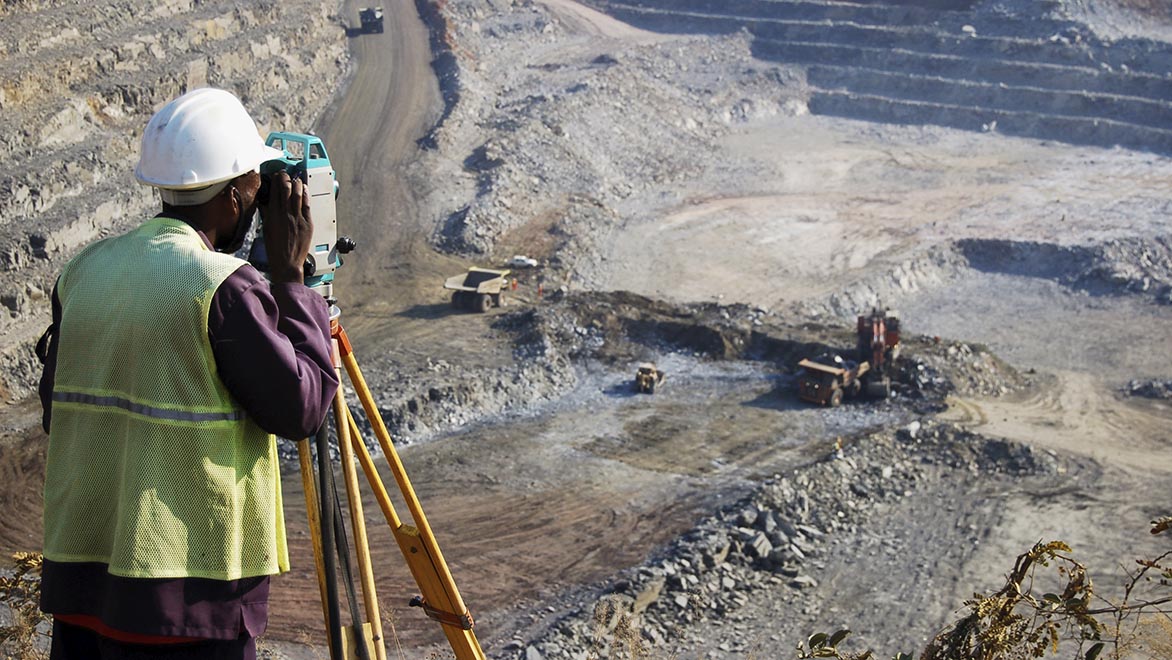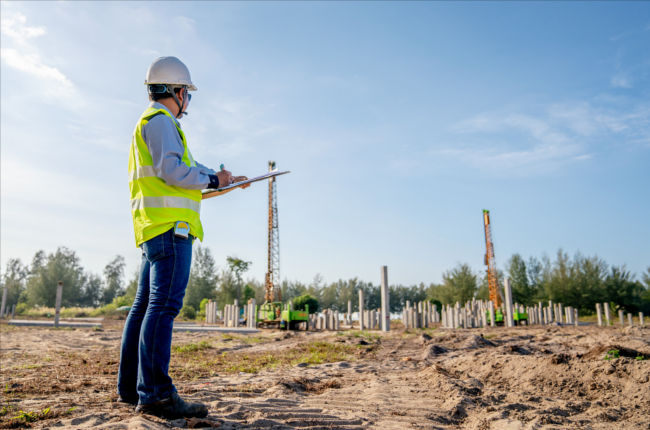Why Hiring a Geo Tech Engineer is Vital for Facility Building And Construction Projects
Why Hiring a Geo Tech Engineer is Vital for Facility Building And Construction Projects
Blog Article
The Relevance of Dirt Analysis and Website Investigation in the Geotechnical Market: Ensuring Security and Stability in Civil Engineering
In the geotechnical sector, soil evaluation and site investigation are foundational elements that underpin the security and stability of civil engineering projects. These processes not just expose the characteristics of subsurface products however likewise inform critical decisions relating to style and building practices. By completely comprehending soil homes, designers can preemptively attend to potential difficulties, ultimately protecting structural integrity. Nonetheless, the ramifications of these investigations prolong beyond instant task success; they can affect long-term sustainability and durability (consulting engineer). As we check out the complexities of these methods, it becomes apparent that their significance can not be overemphasized.
Understanding Soil Properties
In the world of geotechnical engineering, a thorough understanding of dirt residential or commercial properties is critical for educated decision-making and efficient project layout. The characterization of dirt involves the evaluation of numerous physical and mechanical buildings, such as grain dimension circulation, plasticity, shear, leaks in the structure, and communication toughness. These properties determine exactly how soil behaves under different loading problems and environmental influences, making them essential for assessing site viability for building projects.
Soil classification systems, such as the Unified Soil Category System (USCS) and the AASHTO category, give structures for grouping dirts based on their features. This category aids engineers in predicting behavior under stress, water flow, and settlement, consequently affecting design choices and building and construction strategies.
Moreover, the communication in between dirt and bordering frameworks is a crucial consideration in geotechnical engineering. Recognizing soil residential or commercial properties aids recognize potential challenges, such as liquefaction in earthquake-prone locations or excessive negotiation in soft soils. By completely reviewing these buildings, geotechnical designers can make sure the safety and security, security, and durability of structures, eventually contributing to the total resilience of civil design projects.
Techniques of Dirt Analysis

In-situ examinations consist of methods such as Common Penetration Tests (SPT), Cone Penetration Examinations (CPT), and vane shear examinations. SPT reviews the resistance of dirt to penetration, providing information on thickness and toughness, while CPT measures dirt resistance and pore pressure, producing constant profiles of soil stratigraphy. Vane shear examinations are particularly helpful for analyzing the shear toughness of natural dirts.
Lab tests enhance these in-situ analyses and entail tasting soil for regulated screening. Common research laboratory methods consist of Atterberg restrictions, which establish the plasticity characteristics of fine-grained dirts, and compaction tests, which assess moisture-density partnerships. Additional tests, such as triaxial compression and unconfined compression tests, are performed to evaluate the shear stamina of soil samples under different conditions.
Duty of Site Investigation
Site examination plays a crucial role in the geotechnical engineering procedure, functioning as the structure for recognizing subsurface problems. This detailed analysis includes organized expedition of soil and rock properties, groundwater degrees, and various other geological features that influence project safety and security.
Usually, site investigations incorporate a variety of methods, including exploration boreholes, sampling, and in-situ screening. These techniques supply important information on the mechanical and physical features of the ground, informing designers concerning prospective challenges such as soil negotiation, bearing ability, and incline security.
Furthermore, site investigation assists in the recognition of hazardous products and pollutants, enabling the implementation of proper removal procedures. By developing a precise subsurface profile, site investigations aid to mitigate risks connected with construction, ensuring that tasks follow security requirements and you could try these out regulations.
The findings from a comprehensive site examination not only guide style decisions however also affect building approaches and timelines. In summary, the significance of website examination can not be overstated; it is a vital action in the geotechnical design procedure, laying the groundwork for successful project implementation while prioritizing public security and environmental honesty.
Effect On Job Layout
A thorough understanding of soil characteristics considerably affects project style in the geotechnical industry. Dirt evaluation notifies designers about the mechanical residential properties, make-up, and behavior of the ground, which are crucial variables in figuring out the feasibility and safety of a building project. Exact information on dirt stamina, permeability, and compressibility permit the growth of efficient structure styles, guaranteeing that frameworks are adequately sustained and secure throughout their lifespan.
Furthermore, the presence of pollutants or unpredictable soil layers can prompt adjustments in job layout, such as choosing alternate building approaches or materials. This aggressive method reduces threats connected to soil settlement, excessive loading, or side movement, thus protecting both the integrity of the structure and public safety and security.
The assimilation of soil analysis into project layout also promotes conformity with ecological considerations and regulatory requirements. By attending to soil-related obstacles early in the style procedure, designers can maximize resource appropriation and minimize possible hold-ups and expenses connected with unanticipated site problems. Eventually, extensive soil evaluation improves the total top quality and resilience of civil engineering tasks, causing more lasting and resilient infrastructure.
Case Studies and Instances
Demonstrating the vital duty of soil analysis in the geotechnical industry, various case studies highlight its effect on project end results. One noteworthy instance is the construction of a skyscraper in midtown Los Angeles, where substantial soil testing disclosed unsteady subsurface conditions. engineer of record. By identifying the existence of expansive clay, engineers were able to redesign the structure, including deep pilings that made sure security and safety and security, ultimately avoiding possible structural failings

Last but not least, a dam task in the Southeast faced delays due to unexpected dirt disintegration concerns. Comprehensive dirt evaluation permitted engineers to carry out effective stabilization techniques, ensuring that the dam satisfied safety guidelines while sticking to the job timeline. These situations underscore the necessity of extensive soil evaluation and website examination, highlighting their crucial duty in attaining safe and successful civil engineering projects.
Verdict
In conclusion, dirt evaluation and website investigation are fundamental components of the geotechnical market, playing a crucial duty in ensuring the safety and security and stability of civil engineering tasks. By offering important data on dirt buildings and subsurface conditions, these procedures inform foundation style and building and construction approaches. Additionally, extensive examinations add to hazard recognition and risk mitigation, ultimately improving the durability and toughness of structures while optimizing resource appropriation throughout the task lifecycle.
In the geotechnical market, dirt analysis and website examination are foundational components that underpin the safety and stability of civil design tasks. Recognizing soil residential properties aids identify potential difficulties, such look what i found as liquefaction in earthquake-prone areas or too much settlement in soft dirts. SPT examines the resistance of dirt to penetration, providing data on thickness and toughness, while CPT gauges soil resistance and pore stress, producing constant profiles of dirt stratigraphy. These instances underscore the need of detailed soil evaluation and website investigation, highlighting their important duty in attaining successful and risk-free civil engineering tasks.
In final thought, dirt evaluation and site examination are basic parts of the geotechnical market, playing a crucial duty in making certain the safety and stability of civil design tasks.
Report this page